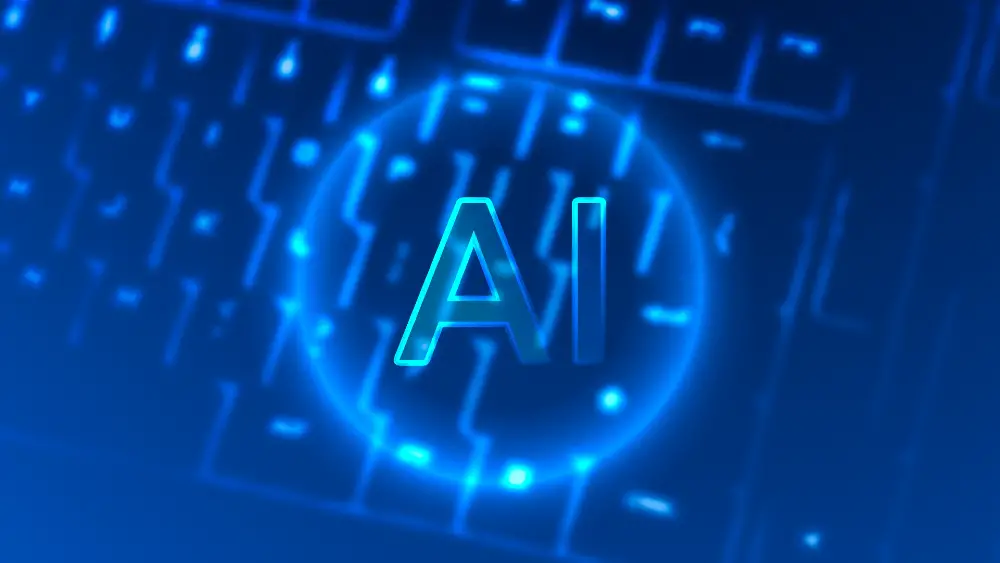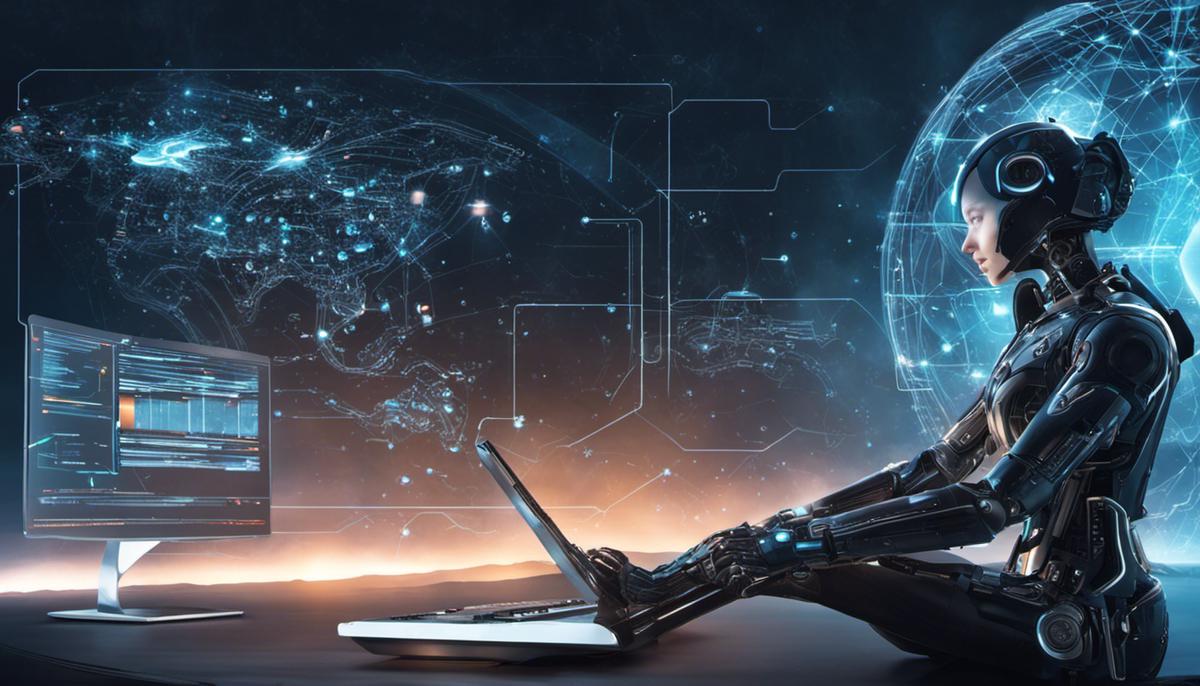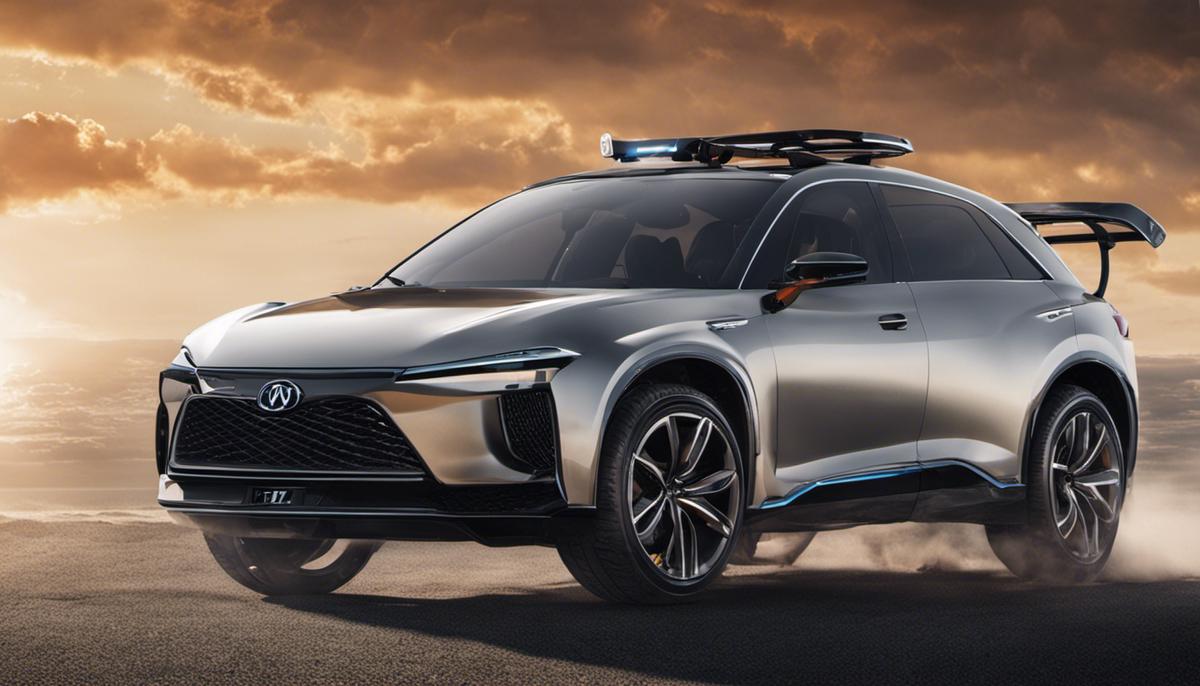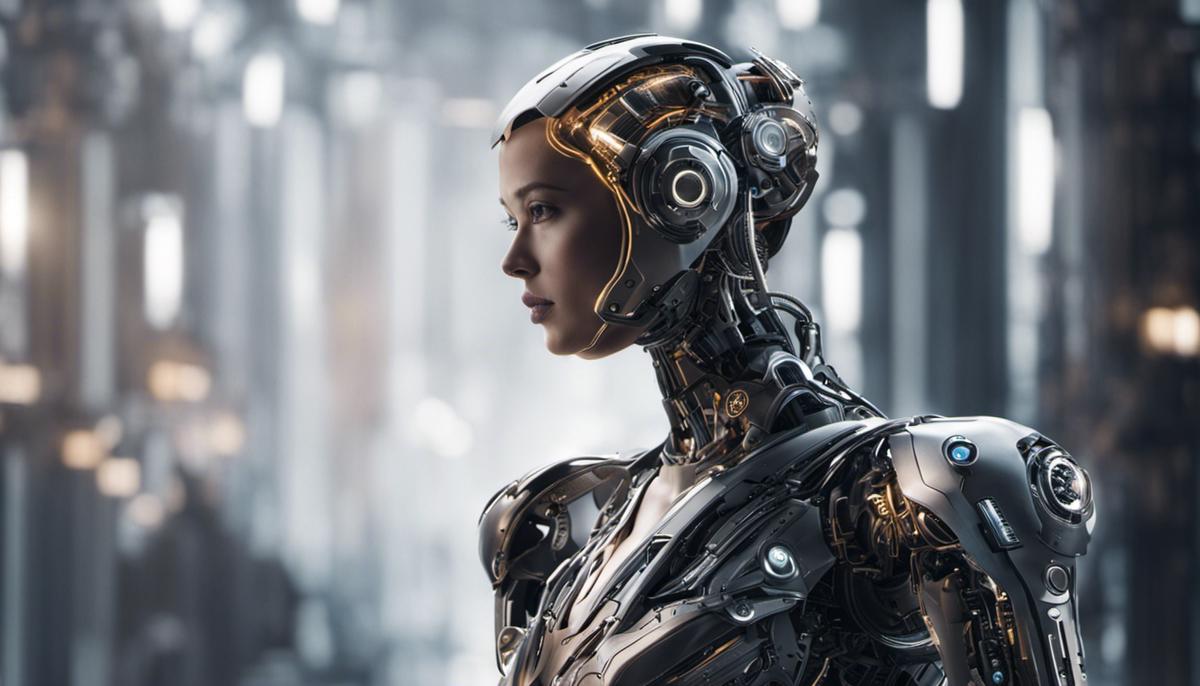Line25 is reader supported. At no cost to you a commission from sponsors may be earned when a purchase is made via links on the site. Learn more
As the world transitions into an era dominated by digital technology, no realm remains untouched by its sweeping tide, least of all web design. The incorporation of artificial intelligence (AI) within the field of web design is fundamentally altering the very fabric of how websites are designed and experienced.
This article dives into the multifaceted role of AI in web design, unfolding its various nuances that include but are not limited to automation of design tasks, personalized experiences, and AI-driven intuitive interfaces. As we delve further into AI’s hand in driving automation in web design, there’s a lot to behold from rapid content production to novel user interface generations.
Role of AI in Web Design
The Artificial Intelligence Involvement and Impact on Web Design

Making strides from its initial stages, Artificial Intelligence (AI) is presently transforming many domains, and web design is not exempted. The infusion of AI into this field introduces a novel way of creating and managing websites, ushering us into an era where automated, intelligently responsive, and fully-customized design systems are the norm.
Enhanced User Experience
For starters, the advent of AI permits an enhanced user experience (UX). Thanks to sophisticated algorithms and machine learning capabilities, AI-powered platforms can analyze, anticipate, and respond to user behavior swiftly. Virtual assistants or chatbots equipped with natural language processing enable real-time, interactive, and personalized engagement with users. Such personalized interaction ultimates to creation of a more consumer-friendly web interfaces and enhanced retention rates, which is a primary objective within the realm of web design.
Web Accessibility
Additionally, AI transforms web accessibility, a critical part of web design often overlooked. Traditional web design methods often contend with the challenge of developing platforms accessible to varied audiences, including individuals with impairments. AI, with its ability to process complex data sets, enables the incorporation of accessibility features such as automated captions for images, voice commands, and predictive text, enhancing website utility for all.
Enhance Time and Cost Efficiencies
The integration of AI into web design also can enhance time and cost efficiency. Advanced AI tools like Wix ADI and Firedrop utilize machine learning to automate design processes, including coding and layout formatting. Such automated design allows supportive reinforcement for web designers, freeing their time to focus on the more conceptual aspects of their projects. Consequently, less time is spent on routine tasks, more affordable websites are produced, and the balance between cost-effectiveness and quality web design is struck.
What are Some AI Challenges?
Notwithstanding these advancements, some challenges with AI in web design persist. Concerns include dependence on huge datasets for machine learning, potential job displacement for web designers, and privacy issues stemming from the collection of personal data. Despite these initial challenges, AI holds the promise of growing to become a foundational pillar for the field of web design.
The Positive Impact AI Can Have on Web Design
Undeniably, the advent of AI is fundamentally reshaping the web design landscape. It fosters intelligent personalization, enhances web accessibility, and drives efficiency in web design operations. The future of AI and web design shows promise. As AI technologies continue to increase in sophistication, their innovation continues, promising to create an even more layered, intuitive, and user-friendly digital environment.
Therefore, embracing AI in web design isn’t a speculative glimpse into the future. It’s happening now, and it’s revolutionizing our approach to web design. The provision of seamless, human-like experiences on web platforms made possible by AI represents not just a revolutionary moment for web design, but for human-computer interaction at large.
It is the start of a new chapter in our understanding and execution of web design, a revolution where AI is the protagonist.
As researchers, web developers, and tech experts, the fascinating journey to understand, explore, and further these breakthroughs offers a thrilling landscape to engage in and draw inspiration from.
The cutting-edge integration of AI and web design marks a milestone that fundamentally transforms our interaction with the digital world. And this, is just the beginning.
AI-Driven Automation in Web Design

Content Generation
Webpage Layout Designs
Another area gaining traction is the automation of webpage layout design using AI. It involves AI predicting, analyzing, and implementing the most effective and appealing website layouts based on user behavior patterns.
Tools like The Grid have given birth to AI-driven web design, where the website is built dynamically according to the content type. With time, these AI applications are expected to further evolve, becoming even more responsive to individual user preferences.
Predictive Analysis for Web Design
AI is also making strides in predictive analysis for web design, providing valuable insights to enhance the efficiency of the design process. Assets such as heatmaps, made operational through AI, track on-screen user behavior, offering suggestions on how to optimize a website layout for maximum user engagement.
A/B Testing
Additionally, AI’s role in automating A/B testing is noteworthy. While A/B testing has been instrumental in design optimization, the process can consume considerable time and resources. AI, in this context, allows algorithmic run of multivariate tests, improving web design outcomes by rapidly and accurately identifying which variants produce the best results.
Voice User Interface
The integration of voice user interface (VUI) in web design is another promising venture brought about by AI. The surge in smart speakers and voice-controlled devices necessitate websites to be voice-search optimized. AI’s voice recognition technology enables this transformation, increasing accessibility and creating meaningful voice-interactive experiences.
Cybersecurity and Web Design
Finally, AI in cybersecurity provides potential for automating web design protection. AI algorithms are capable of recognizing and neutralizing threats in real-time, fortifying website integrity in an era of increasing cyber threats.
Incisively put, the advent of AI encourages a shift in perspective about web design as a creative discipline. It underlines how AI’s automation capabilities can complement human creativity and intuition, rather than replacing them. The confluence of AI and web design, hence, signals an exciting and transformative chapter in the digital landscape. Indeed, the impressive strides of AI in automating web design are but a precursor to a grander journey of technological evolution on the horizon of the world wide web.
Impact of AI on User Experience

Role of AI in Web Design: Advanced Applications for Enhanced User Interaction
AI’s influence over webpage layout design further underscores its pivotal role. Designers can employ AI algorithms to devise visually stunning, practical, and user-friendly designs. This blend of aesthetics and user-focus may radically improve upon earlier, more uniform designs, remapping the landscape and expectations of website layouts.
As technological advances offer increasingly sophisticated design tools, a new focus is predictive analysis in web design. Predictive analytics, powered by machine learning models, foresee user behavior allowing designers to tailor websites accordingly. This enhances user experience and satisfaction, and could ultimately influence audience retention and increase conversions.
A/B testing, a cornerstone of web designing, is experiencing automation through AI. By facilitating swift simultaneous experimentation of multiple design ideas, AI substantially streamlines the testing process and improves results accuracy. The ultimate winner, the user, benefits from optimized web designs, thus suggesting the invaluable role AI plays in enhancing user experience.
As the digital age matures, voice user interface (VUI) integration has become essential. AI guides this process, supporting designers to embed voice search capabilities seamlessly into websites. With increasing reliance on voice-activated assistants, such as Alexa or Siri, these designs align with evolving user behaviors, offering an integrated and intuitive user experience.
Cybersecurity, though often considered a separate sphere, must be inherently woven into web design – a responsibility AI is equipped to shoulder. By continually learning from security breaches, AI can provide proactive protection to websites, drastically reducing vulnerabilities while ensuring a smooth user experience.
Last but not least, AI’s burgeoning role in web design automation signifies a shift in perspective about web design as a creative discipline. This increasingly systemic, yet groundbreaking approach, optimizes efficiency, improves standards, and upholds consistency – elements traditionally revered in the artistic realm of design. Creativity and automation, seemingly at odds, harmoniously converge within the AI sphere, amplifying design brilliance.
In summary, AI stands as a transformative force within web design, propelling forth an era of automation, optimization, cybersecurity, and much more, continually enhancing user experience. The promise of AI in web design rests not just in its potential to streamline processes, but in its capacity to reshape our understanding of the design discipline itself.
Future Prospects of AI in Web Design

The AI-driven layout design of web pages is an area with immense future potential. Leveraging AI’s ability to process and learn from vast amounts of data, web designers could introduce AI systems that can analyze user behavior and design trending layouts. Templates could become a thing of the past, with each website morphing to fit the unique preferences of the specific user, all devised by AI.
Predictive analysis in the realm of web design can bridge the gap between web developers and site visitors. An analysis performed by AI can identify emerging trends amongst users, predicting not only their preferred aesthetics but also their functional demands. This, in turn, enables web developers to proactively adjust their designs to adhere to user needs before they even articulate them.
AI is also primed to automate A/B testing. By monitoring user interactions, AI can swiftly identify trend patterns and apply these to generate and test options. This streamlined procedure abolishes the cumbersome task of manual testing, saving time and further ensuring optimal web designs.
The integration of Voice User Interface (VUI) capabilities stands as another future development in the field. As voice-activated systems become more prevalent, AI would not only be answering commands but also predicting them. Websites could be transformed into interactive platforms, functioning through voice cues integrated into the web design.
In a field as vulnerable as the online sphere, AI’s role in cybersecurity in web design is paramount. Anticipating malware attacks or identifying potential vulnerabilities in the design can be entrusted to intelligent systems. More resilient websites can emerge, fortified by an intelligent layer of protection offered by AI.
Undoubtedly, the emergence of AI fundamentally changes how we perceive web design as a creative discipline. It adds another layer, shifting it from a purely artistic venture to one poised at the intersection of creativity and technology.
As AI continues to automate numerous processes in web design, the role of human web designers would shift from creating to guiding and fine-tuning AI systems as they take the reins. This paints a future image of harmonious partnership where machine intelligence enables and elevates human creative instincts, rather than replacing them, navigating towards an era of unprecedented web design proficiency.
Frequently Asked Questions
Can AI design entire websites from scratch?
AI can generate website layouts and designs, but human input and creativity are still essential for producing a unique and aesthetically pleasing website. AI can be a valuable tool for web designers, but it doesn’t replace them entirely.
What are AI-driven content recommendations in web design?
AI can analyze user data to recommend content that is more likely to engage and interest individual users. This could include suggesting articles, products, or services based on their browsing history and preferences.
How does AI assist with responsive web design?
AI can help optimize web content for different devices and screen sizes, ensuring that websites are responsive. It can automatically adjust layout, images, and content to provide the best user experience on various screens.
How can AI improve SEO in web design?
AI can analyze keywords, search engine algorithms, and user behavior to suggest SEO strategies. It can help optimize content for search engines and improve the ranking of websites in search results.
Is AI capable of making websites more accessible?
Yes, AI can assist in making websites more accessible by providing features like speech recognition, text-to-speech conversion, and image recognition to help users with disabilities access web content.
Can AI help with website load times and performance?
Yes, AI can optimize web performance by analyzing and optimizing website elements, reducing image sizes, and caching resources. It can also prioritize content delivery based on user behavior.
Are there any ethical concerns with AI in web design?
Yes, ethical concerns include data privacy, biases in AI algorithms, and the potential for job displacement. It’s important to use AI responsibly and be mindful of the impact on user privacy and employment in the design industry.
Final Thoughts

Peering into the future, the promises and possibilities of AI’s involvement in web design seem boundless. From predictive user behavior geared towards delivering optimized user experiences to chatbots humanizing interactions, AI’s plethora of applications creating a path for more interactive and user-friendly websites.
Augmented by advancements in AI technologies, the future of web design signifies an unprecedented era of highly intuitive and user-centric designs. The anticipated developments and trends only further highlight the impending expansion of AI’s role in web design, underlining the potential evolution and transformation of the digital landscape that awaits both web designers and users.

